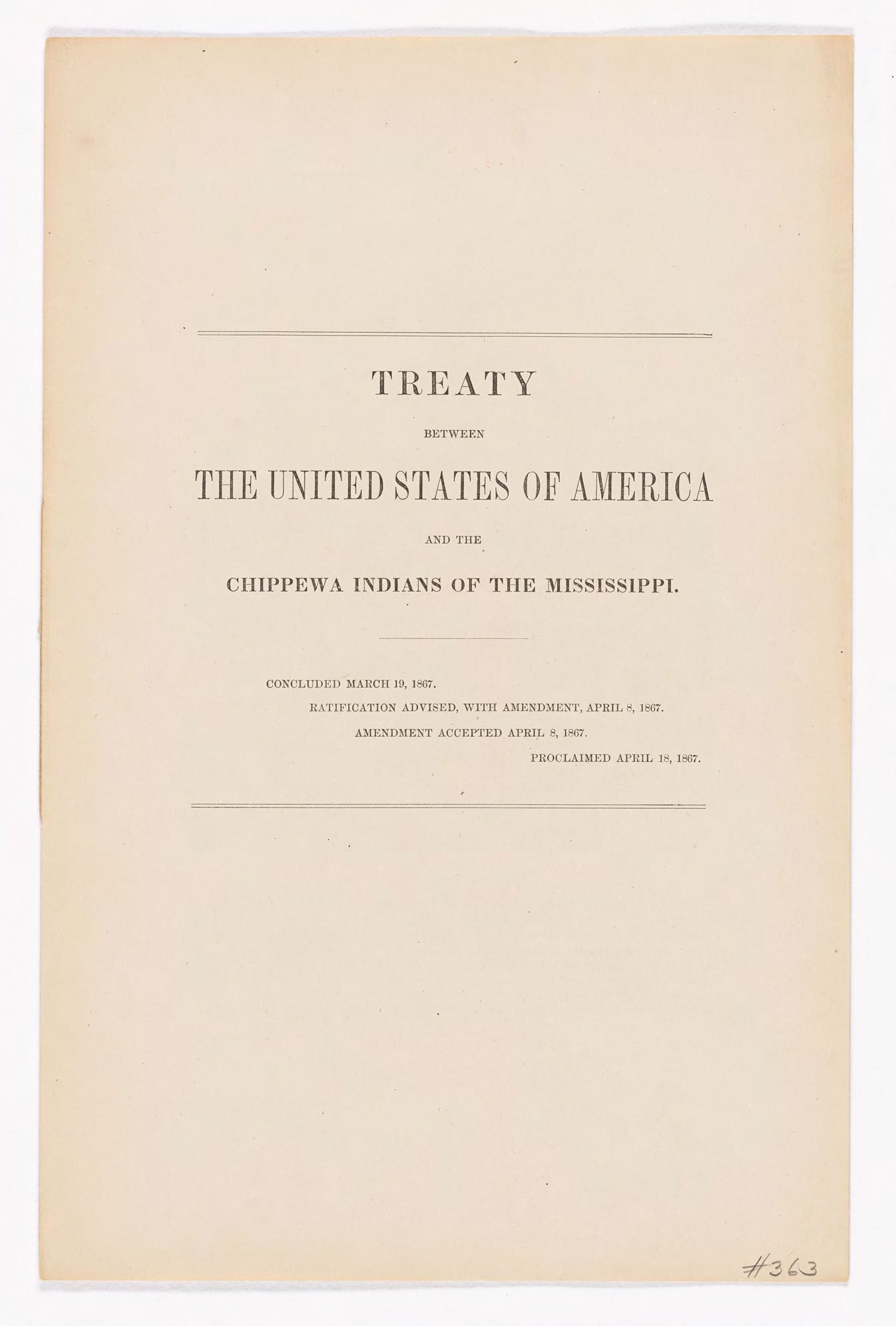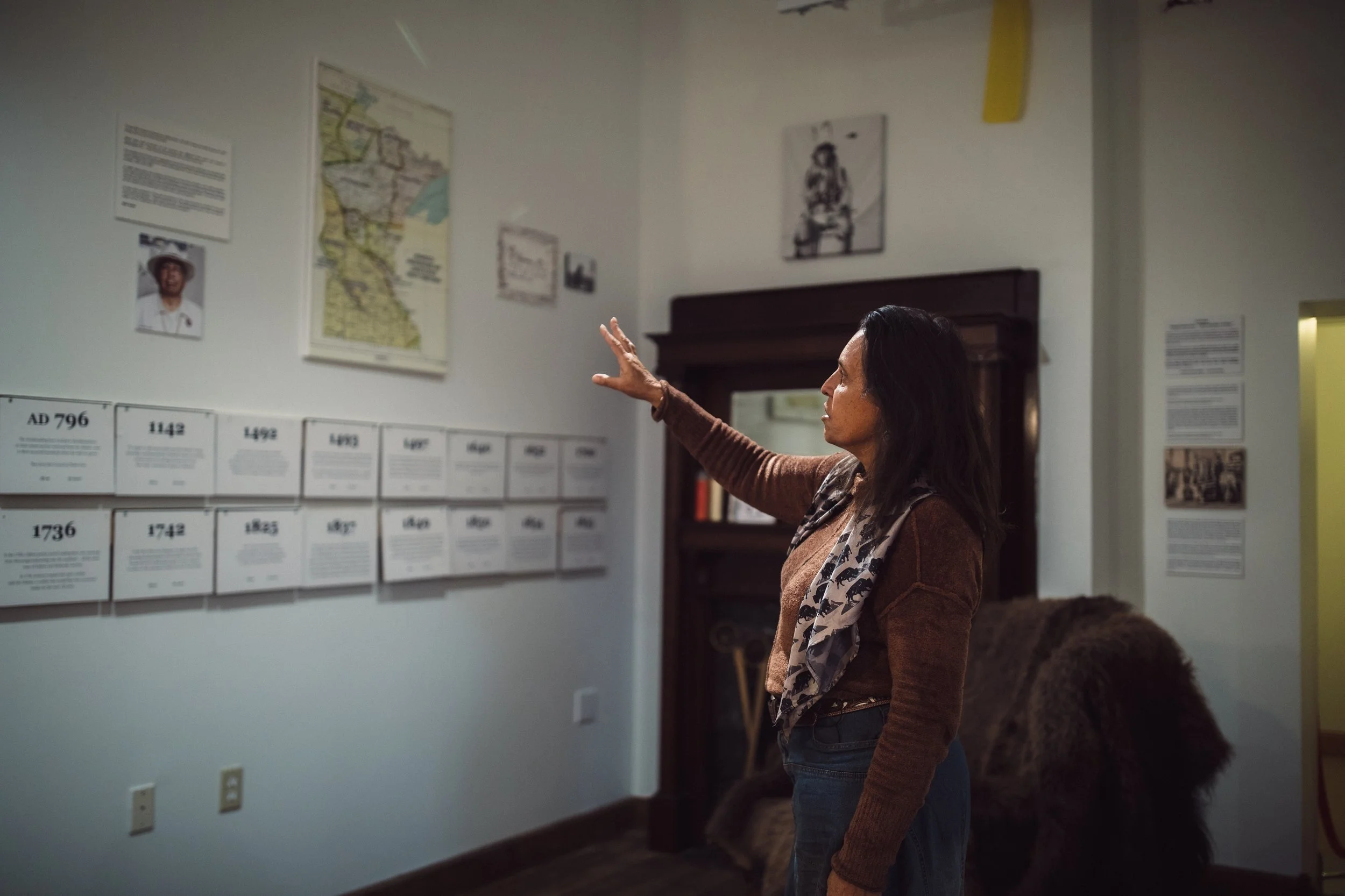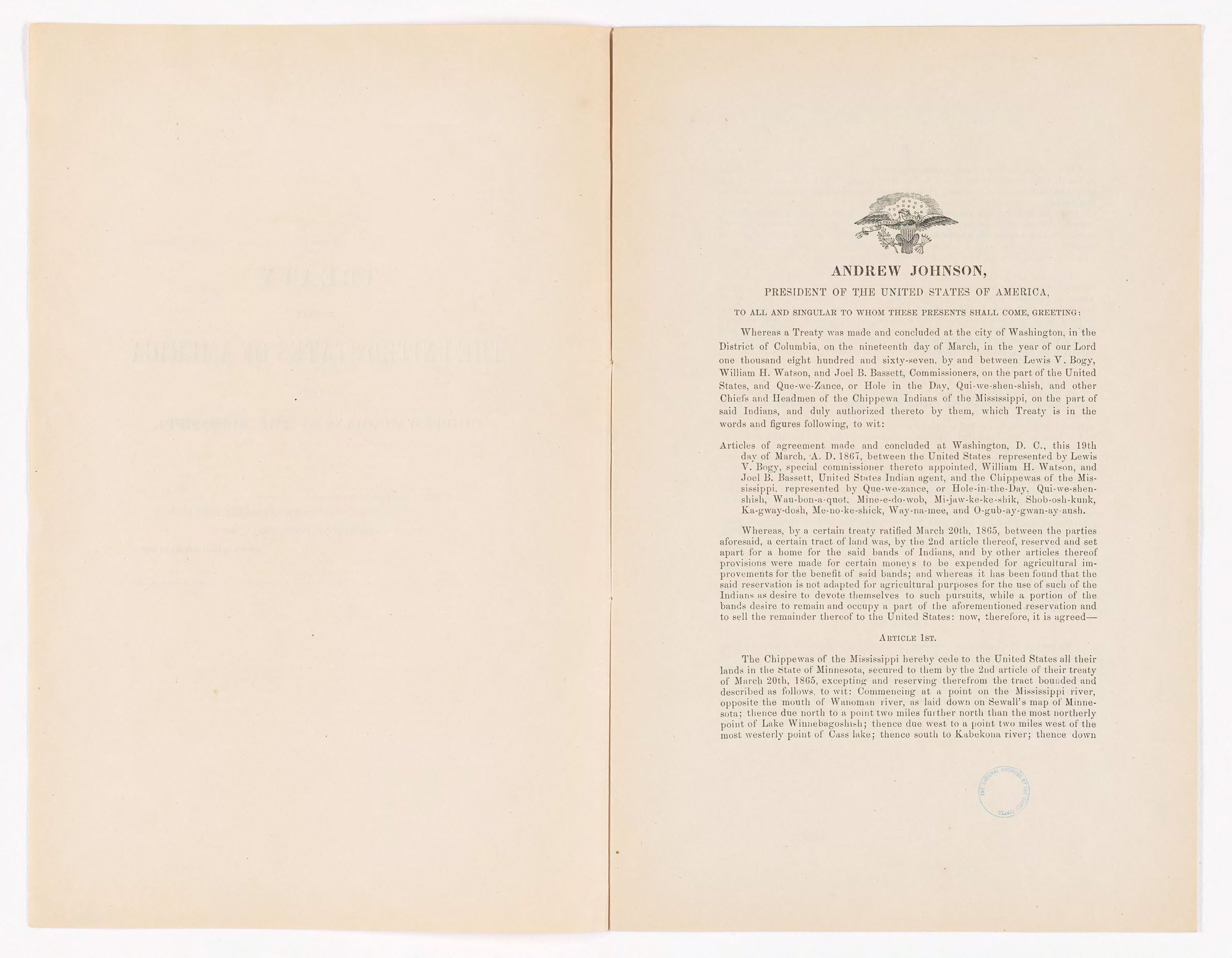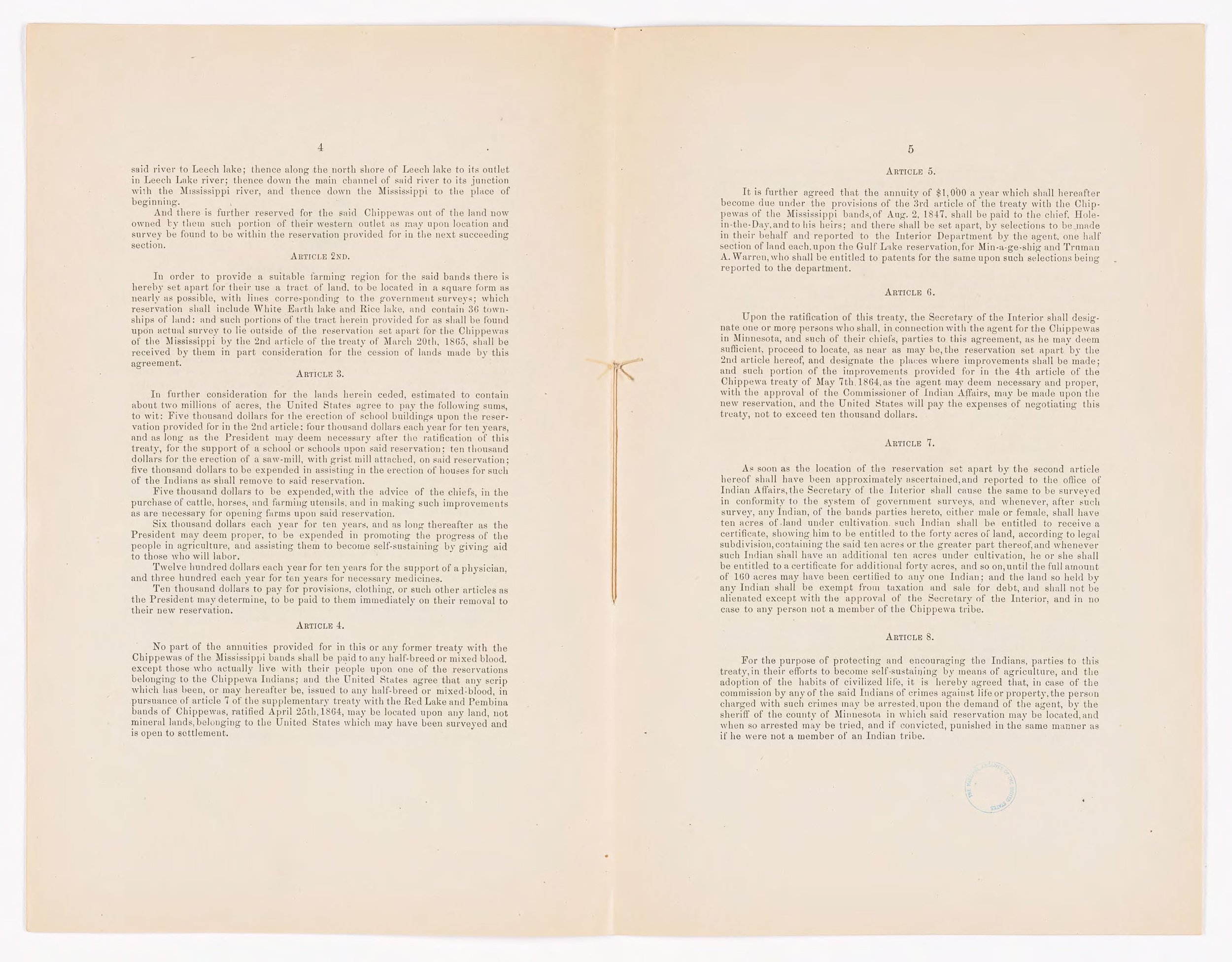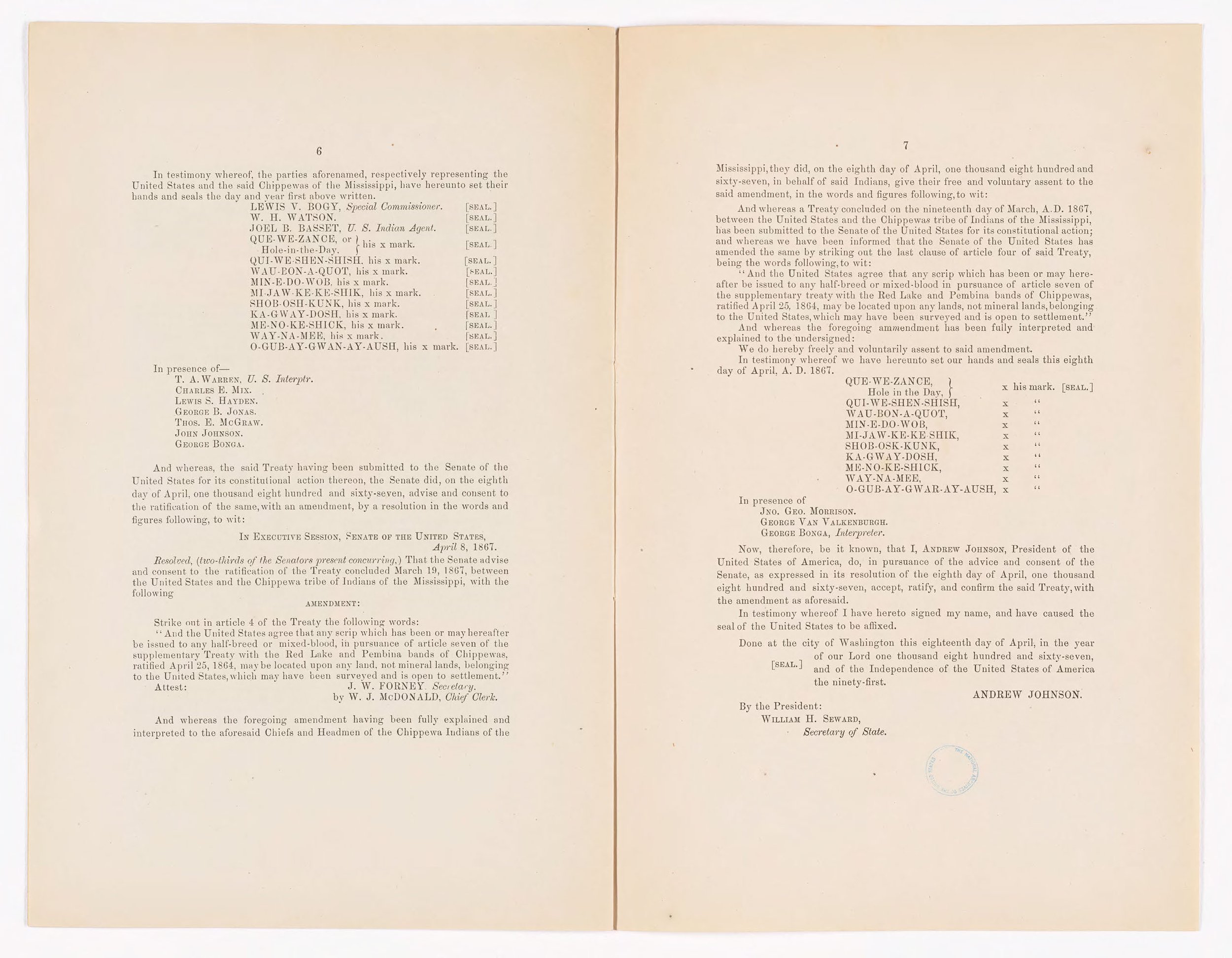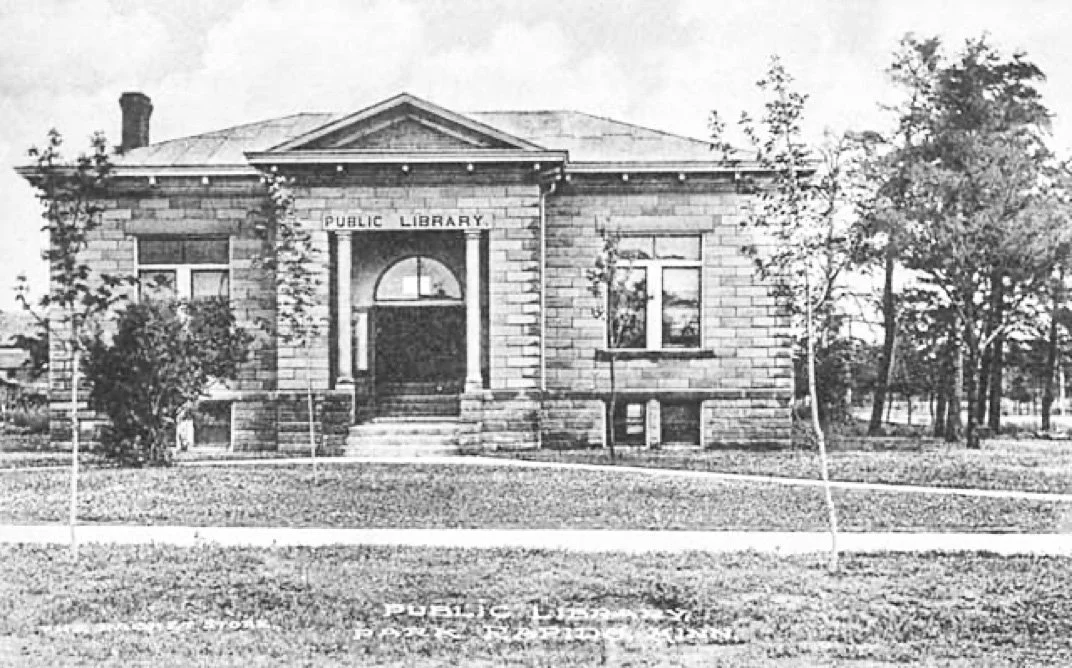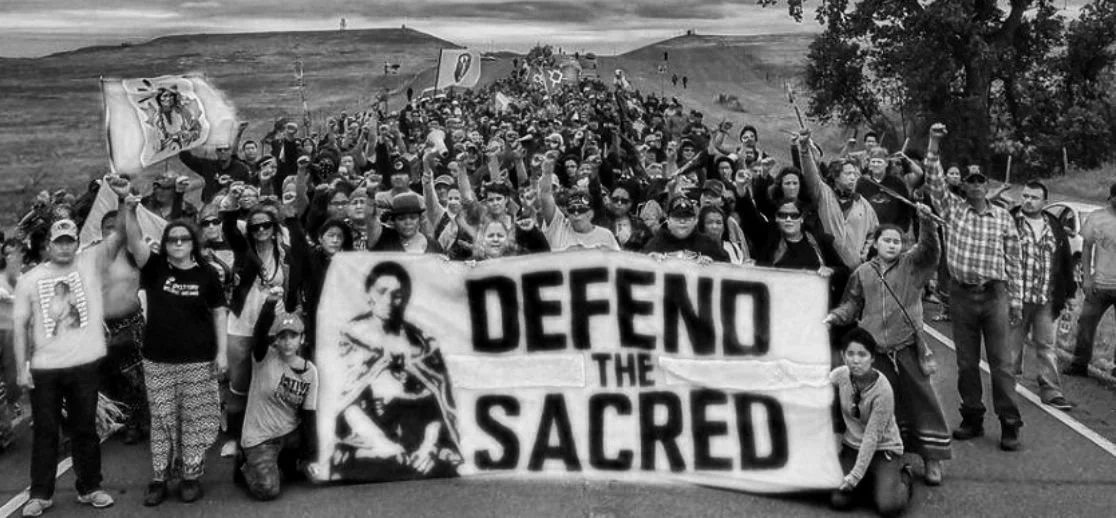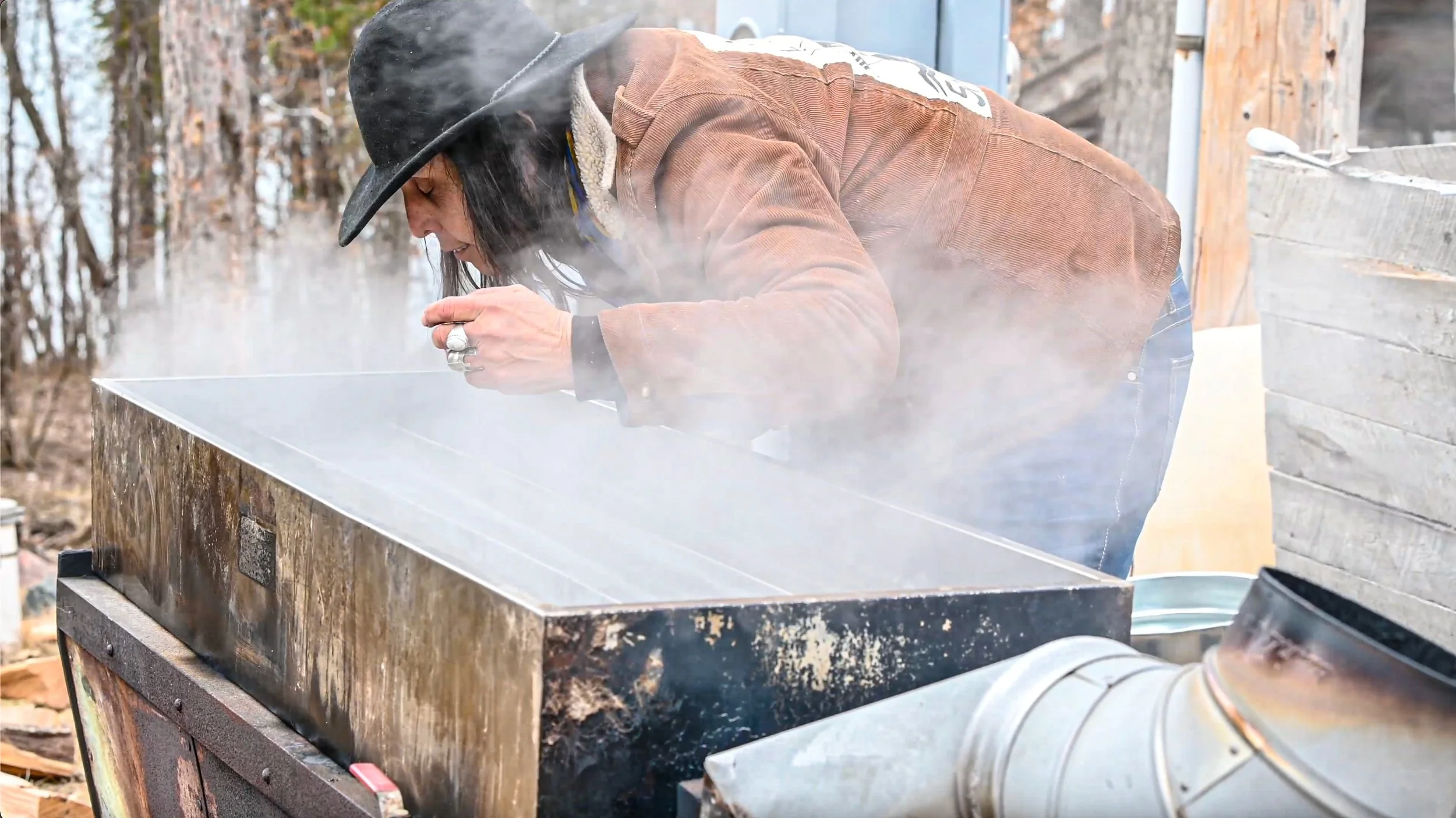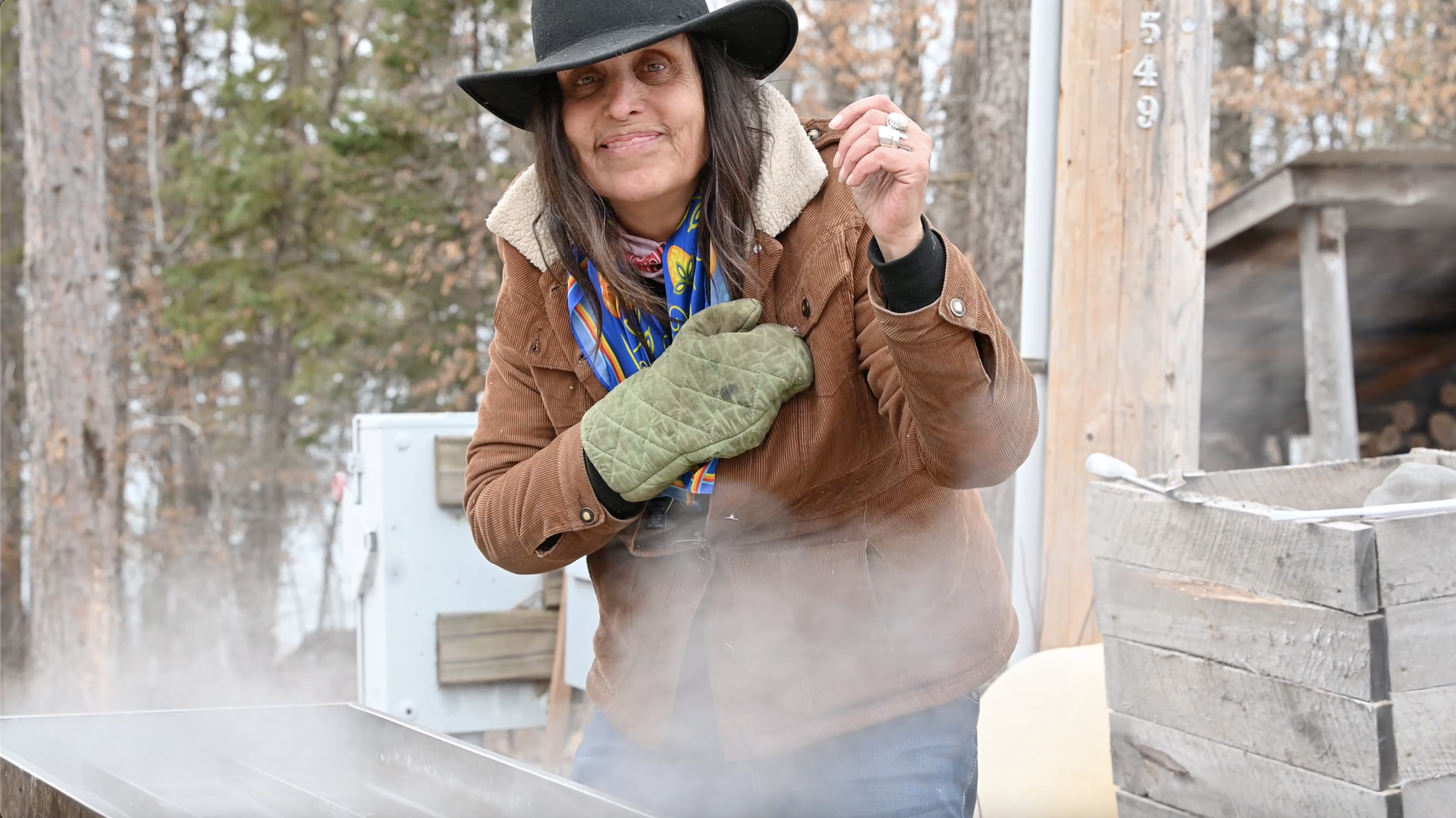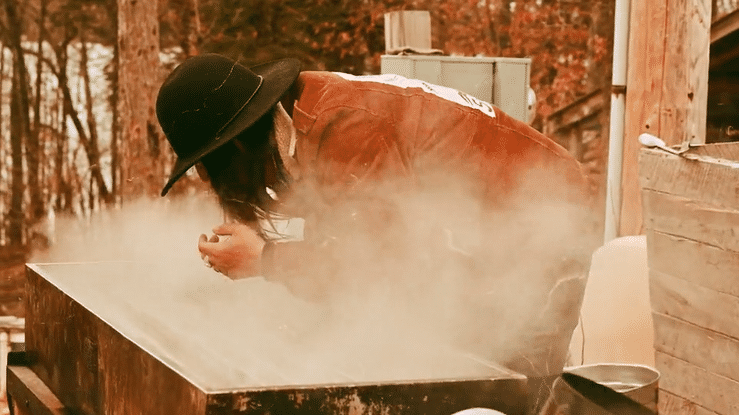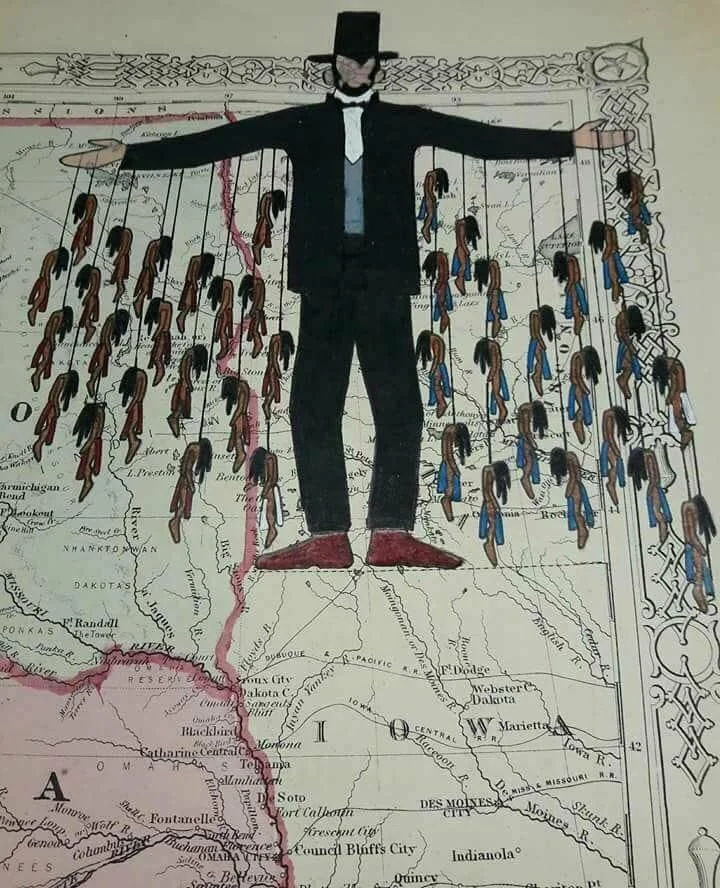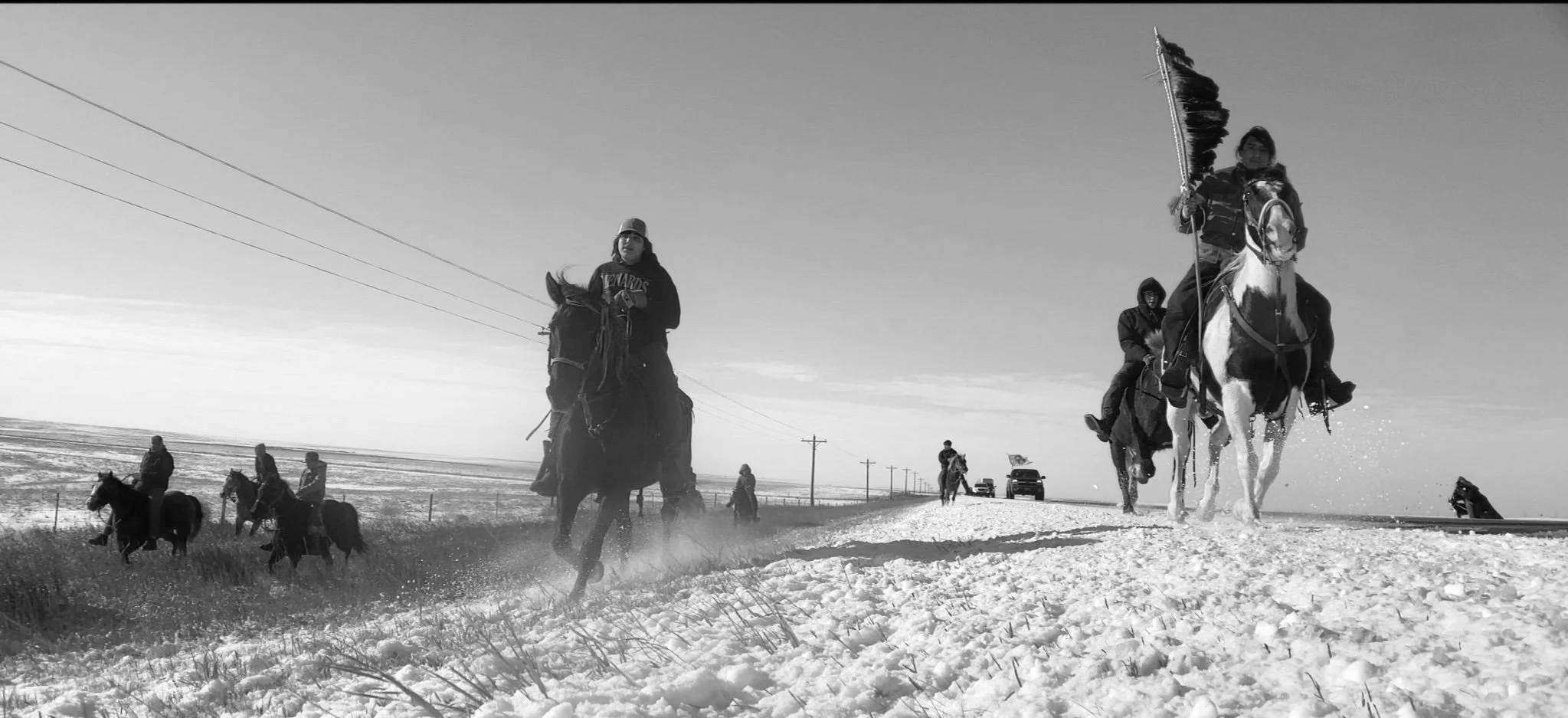Nations should honor agreements by Winona LaDuke
Nations should honor agreements
The 1867 Treaty was intended to provide a secure homeland for the Anishinaabe people forever. The Treaty was signed by our leaders and by President Andrew Johnson.
Agreements should be honored by nations.
Nations should honor agreements
by Winona LaDuke.
Minnesota Legislature, Sen. Mary Kunesh introduced SF 3480 3480 which would return the 160,000-acre White Earth State Forest to the White Earth band of Anishinaabe. It follows a land return to the Lower Sioux in mid March and represents a way to begin healing the wounds of Minnesota’s past and comply with the law.
The 1867 Treaty was intended to provide a secure homeland for the Anishinaabe people forever. The Treaty was signed by our leaders and by President Andrew Johnson.
Agreements should be honored by nations.
The Treaty provides for many things: The 837,000 acres of land, maples, the wild rice, the 47 lakes, the lifeblood of our people and …
“... the lands so held by any Indian shall be exempt from taxation and sale for debt and shall not be alienated except with approval of the Secretary of Interior and in no case to any person not a member of the Chippewa ...” — Article 7 of the 1867 Treaty.
That is the law of the land.
Nations and political leaders should keep agreements.
That’s how we keep the peace.
That’s not what happened. Land was taken illegally and the United States and Minnesota did not do the right thing for over a century. And now the state is trying to make it right. At the Minnesota Legislature, Sen. Mary Kunesh introduced Sf 3480 which would return the 160,000-acre White Earth State Forest to the White Earth band of Anishinaabe. It follows a land return to the Lower Sioux in mid March and represents a way to begin healing the wounds of Minnesota’s past and comply with the law.
Mahnomen and Becker county lawmakers seemed confused when they testified at the state hearing. Sen. Paul Utke referred to the bill as a “land grab” and David Geray, a Mahnomen County commissioner, talked about being blindsided by the land transfer. “Mahnomen County is entirely within the reservation. We didn’t find out about this until we were down here.”
That’s sort of surprising considering that these are elected officials who should understand the law and history. Here is a bit of history. This land is called Indakiingimin, the very land to which we belong. It is all we have left, Iskongigen, Reservation, leftovers.
The White Earth Reservation was reserved under Treaty, to protect our vast pine forests, 47 lakes, maple trees, our wild rice, and our water. For that is the source of our lives.
Our land was coveted. Sen. Knute Nelson secured the passage of what was to be known as the Nelson Act in 1889, not only illegally annexing four townships from the Treaty protected lands, but also violating the Treaty by creating a system to divide the land allotments. That’s how the big pines were cut. Then came Moses Clapp, and Steenerson who attached riders to bills securing access to more land, violating the same Treaty, and creating the place for Mahnomen County. Literally, counties which are located on the White Earth Reservation carved themselves out of the Reservation illegally. Now that’s a land grab.
The Minnesota Indian Affairs Council provides this history:
The Dawes Act of 1887, Nelson Act of 1889 along with the Clapp Act of 1904 and Snyder Act of 1906, enabled the rapid division of the reservation and allotments were given to individuals of 80 acres to head of household and 40 acres each to their children. There were many schemes to defraud individuals and minors from their land. Around the turn of the century much of the original Reservation land was illegally taken from allottee or their heirs through tax forfeit, minor sales, full blood or administrative sales. The timber was sold and cut and much of the land quickly passed into non-Indian ownership.
There are many ways to steal land from Indian people, and most of them happened here on the White Earth Reservation. It was something like “Killers of the Flower Moon” land speculators, lumber companies, and thieves.
Some land is taken with a gun, some is taken by a pen. Three hundred white farmers suddenly became mixed-blood allottees, illegal tax forfeitures of tribal trust land, forced fee patents, minor sales, and more illegal full blood sales, pushed it further. These thefts were the subject of no less than 1,600 lawsuits, but these cases were blocked.
By 1910, the people had been devastated, three-quarters of the allotments had been lost, and the forest was falling. The president sent Warren Moorehead out to investigate. Whole families blinded by trachoma, and land speculators all around, tuberculosis spreading like wildfire as people lived in refugee camps. He found diseases and death everywhere. We were almost wiped out as a people. Moorhead received death threats for telling the truth and returned to Washington. None of that should have happened if nations kept agreements.
The White Earth people were made refugees in our own land. Between 1915 and 1930 most tribal members were forced to move off Reservation. We have been the poorest people in the state of Minnesota since that time.
There have been many lawsuits, but none stopped the theft until the Zay Zah Case in 1977 which was filed by Clearwater County against Zay Zah, or George Aubid. The Minnesota Supreme Court found that Clearwater County had illegally attempted to tax forfeit a tribal allotment.
Finally, someone stopped the land grab.
In 1983, there were only 54,125 acres in tribal hands, and 1,953 under allotment on the Reservation, representing 7% of the Reservation. The largest landowners on the Reservation are the federal state and county governments, holding one third of the Reservation.
What is right and just is the return of lands which were taken in violation of the 1867 Treaty. This bill represents a way toward justice without displacing a single non-Indian landholder, and upholds the Treaty responsibility of the U.S. government.
“We’ve managed these lands long before the inception of any of these counties,” Eugene Sommers, District 1 representative, says. “For them to question our competency in management of these resources is a big slap in the face. History is repeating itself.”
I want to personally invite county commissioners and all to Giiwedinong, the Treaty Rights History and Culture Museum in Park Rapids. Minnesota.
Knowledge of the law is better than ignorance of the law. And understanding history is a good way to begin to heal.
A column by Winona LaDuke published March 23, 2024 - Alexandria Echo Press
LaDuke: Buffy Sainte-Marie shows that it’s possible to carry on
Sainte-Marie, now 81, records, tours, and makes magic, still. Her amazing career, commitment to art and to community is told in the documentary, “Buffy Sainte-Marie: Carry it On.”
Buffy Sainte-Marie attends the "Buffy Sainte-Marie: Carry It On" premiere during the 2022 Toronto International Film Festival at TIFF Bell Lightbox on Sept. 8, 2022, in Toronto.Unique Nicole / TNS
Opinion by Winona LaDuke
December 14, 2022 11:00 AM
I was that little 5-year-old girl who sat and listened to every song of Buffy Sainte-Marie’s first album. It was an LP full of songs like “The Universal Soldier” and “Now That the Buffalo’s Gone.” I would stare at the cover, look at her skin and my own. And smile. Buffy Sainte-Marie was my role model.
Her amazing career, commitment to art and to community is well told in the just-released PBS documentary film, “Buffy Sainte-Marie: Carry it On.”
Buffy Sainte-Marie, now 81, records, tours, and makes magic, still. That’s a long performing history. In 1983, she became the first Indigenous person to win an Oscar. Her song, “Up Where We Belong,” won the Academy Award for Best Original Song, also winning the Golden Globe award the same year.
I listened to those songs repeatedly as a child, and they formed not only my identity but also my sense of history.
“Now That the Buffalo’s Gone” is a searing testimony of America’s genocide against Native people but also calls upon all of us to step up, calling out directly to those “who have Indian blood.”
Put it this way: There are so many people who say they are part Indian, but don’t really want to do a darn thing to honor that blood, whether protecting Mother Earth, writing a letter to support their tribal community to a state senator, or maybe just sending a donation to a Native organization. Too many people just brag about being part Native, and not really act like it means something.
There were many more songs which deserved attention, but in the spirit of exclusionary America, Native people are often and largely erased from history. “Carry it On” brings to light what erasure looked like in the 1970s.
In Buffy’s case, it meant that her songs had no airtime on the radio. That was because of calls made by government officials who did not want the Native “plight” brought to the American people. That’s how you can make an artist disappear, unless they are Buffy Sainte-Marie.
Sainte-Marie found out about the government’s interference in her career years later. “They don’t tell you, ‘Hey, you’re under surveillance,’” the singer told a reporter at the Guardian. “I found out about it on a radio show in the ‘80s.”
Sainte-Marie makes clear, however, that the U.S. government didn’t blacklist her directly. “It’s much worse than that,” she said. “A blacklisting would take an act of Congress. Instead, a couple of sleazy employees … make nasty phone calls to whomever the administration says they should make nasty phone calls to. It’s done on a social level. It’s not even politics. President Johnson was a Democrat and President Nixon was a Republican but neither one of them wanted to hear about what I was singing about. They were deathly afraid of the whole Indigenous law situation because they were highly invested in energy companies and, when it comes to Indigenous rights, that’s the motivating factor.”
The program which intended to burn up Buffy’s career was called COINTELPRO.
Created by FBI Director J. Edgar Hoover, COINTELPRO targeted Native, Black, Latino and progressive activists to reduce their ability to talk to the American people, and perhaps change consciousness. This meant, for instance, the Black Panthers were highly targeted, as was the American Indian Movement. COINTELPRO resulted in assassinations (Black Panther Fred Hampton) and Anishinaabe American Indian Movement leader Leonard Peltier’s conviction for Oglala deaths of the two FBI Agents who had been on the Pine Ridge Reservation as a part of the program.
Peltier is still in jail, but the “reign of terror” as it was called on Pine Ridge, fueled by COINTELPRO resulted in the deaths of many Native activists.
Despite COINTELPRO, Buffy was unstoppable and a chameleon. She moved to “Sesame Street,” where she was able to talk to millions of children in dozens of countries worldwide, leaving a clear impression that Native people were not in the past, but were very present in the world of today. And she continued to perform.
I met Buffy finally one day in Nebraska, where we had both come to an event honoring Chief Standing Bear, a Pawnee leader who was the first Native person to be recognized as a human by the U.S. court system.
I was 50 years old. Buffy was still as big as my childhood imagination. However, when she greeted me backstage, I towered over her, by about a foot. I have had the opportunity to thank her a couple of times for her gifts, but this film, “Carry it On,” is a way for us all to begin to understand what an artist like Buffy can do, and how, despite all those attempts to side line her, she’s still here and she’s as strong and beautiful as ever.
Buffy Sainte-Marie is full of life and love. That’s to say, that there’s a lot of bitterness in America, a lot of messed up history, but Buffy shows that it’s possible to carry on, and six decades following the release of “Now That the Buffalo’s Gone,” the story and moral call for action remain. I still want to grow up and be like Buffy.
Photo (Buffy Sainte-Marie attends the "Buffy Sainte-Marie: Carry It On" premiere during the 2022 Toronto International Film Festival at TIFF Bell Lightbox on Sept. 8, 2022, in Toronto.Unique Nicole / TNS)
Heritage Month- Library Back by Winona LaDuke
It’s just been the month when Native people are remembered. That’s nice. Now we want more, like we want to protect that Native heritage life-way and tell our stories to all. We also want to create a new history, one which is healing, restorative, and makes a better society and better world.
Native people are not in the past, we are in the present and we are in the future. Here’s a story we are making, it’s in Park Rapids, Minnesota and we can make this story together.
Giiwedinong, the new Treaty and Culture Museum will open this upcoming spring in downtown Park Rapids in the former Carnegie Library. In late October, we purchased the building, and hosted ceremonies at the former library, as our Native community organization, Akiing took possession of the building. Land Back that’s called, or Library Back in this case.
Heritage Month- Library Back
Winona LaDuke
New Giiwedinong Treaty Rights and Culture Museum - Photo by Sarah LittleRedfeather
It’s just been the month when Native people are remembered. That’s nice. Now we want more, like we want to protect that Native heritage life-way and tell our stories to all. We also want to create a new history, one which is healing, restorative, and makes a better society and better world.
Native people are not in the past, we are in the present and we are in the future. Here’s a story we are making, it’s in Park Rapids, Minnesota and we can make this story together.
Giiwedinong, the new Treaty Rights and Culture Museum will open this upcoming spring 2023 in downtown Park Rapids, MN in the former Carnegie Library. In late October, we purchased the building, and hosted ceremonies at the former library, as our Native community organization, Akiing took possession of the building. Land Back that’s called, or Library Back in this case. And, then we hosted a Day of the Dead Celebration there, to honor the multi-cultural community of the Deep North, and to share the beauty of ceremonies from the south. We are proud to be a part of making history.
Photo by Sarah LittleRedfeather - Salsa Tuesday’s
Here is the beginning of this story. Long ago, Misaabe Wajiw was born, that’s a long ridge on the shore of Lake Superior, which is the body of a sleeping giant. the Missabe Iron Range. That’s also part of a Thunder being a giant ore deposit which was known by our ancestors as part of a sacred geography and land.
It’s said that our wealth is the source of poverty. In this case, large mineral deposits. That’s how it began, the theft of the land, and the dispossession of our people. The 1837 1842 and 1854 and l855 treaties were about iron ore, copper and trees. At the turn of the century, Duluth held more millionaires than any other place in the world. This is the story of the Weyerhaeuser, Carnegie, JJ Hill, Pillsbury, Musser, Congden empires and more. They did not spin straw into gold they were complicit in the theft of land, trees, and wealth.
Take the story of Andrew Carnegie. The opening of the fabulously rich Mesabi Range in Minnesota in 1892 created the opportunity for Andrew Carnegie to take control of North America's richest iron deposits. Carnegie owned mineral rights. At the turn of the century, Northern Minnesota was the largest producer of iron in the world. And Andrew Carnegie did well. In l901, at 66, Andrew Carnegie was the world’s richest man. He quit, he retired.
Then, Andrew Carnegie decided to become a philanthropist, a person who gives money to good causes. He, like a few of the wealthiest people in the world, believed in the "Gospel of Wealth," which meant that wealthy people were morally obligated to give their money back to others in society. After all, you can’t take it with you.
Andrew Carnegie supported education; he gave money to towns and cities to build 2507 public libraries mostly in small towns throughout the country. And, then Andrew Carnegie financed the beginning of the Hague, the World Court, and a number of educational institutions. Carnegie believed in education and knowledge. Those libraries brought worlds far away imagination and a place of solitude to rural areas. The people appreciated the Carnegie Libraries as they were known, and many of us, including myself, spent many hours and days of our youth in a Carnegie Library.
The City of Park Rapids, Minnesota once had a Carnegie Library. Then, the city decided that the library should move to an old bank building, to insure handicapped access. And, then the Carnegie Library became a home to private businesses. One of those businesses was the Canadian multinational pipeline company Enbridge. That company wanted to put in Line 3, the largest tar sands pipeline in the United States.
In 2015, Enbridge purchased the former Carnegie Library in Park Rapids Minnesota, deploying it as a headquarters for their expansion in the l855 Treaty Territory. This struck many of us the wrong way, considering the library was for enlightenment, not greed. So, we responded by creating a presence in front of the offices. That’s to say, beginning in January of 2021, when Enbridge was beginning to run over our lands, we gathered. We would stand outside the offices with signs that said Water is Life, and other such controversial phrases, and to keep warm we would dance, and sing. Then we would go eat at the Mexican restaurant, Vallartas . We began to refer to this as Salsa Tuesdays. One day, we stood with some signs that said, Deport the Canadians, Keep the Mexicans This became a gathering event for Water Protectors in 2021. And we became very good at the Macarena. And very grateful for the warm meals.
Salsa Tuesday’s - Photo by Sarah LittleRedfeather
Enbridge began selling off their properties after they commissioned Line 3. Leaving liabilities, broken aquifers, fracked rivers, and court systems clogged with Water Protectors. And, then we, beaten, arrested, continued to dream. On October 27 of this year, Akiing an Anishinaabe Community organization purchased the former Enbridge office, the Carnegie Library. We intend to turn this into Giiwedinong- a Museum and Cultural Learning Center of the North.
Giiwedinong means “in the north. We had a good celebration for everyone, and now we are ready to work and make beautiful. Our first big public event was Dios de Lost Muertos; a Day of the Dead celebration with our Indigenous relatives from the south. Honoring those who had passed, and celebrating this moment we call life, we had a hundred or more people show up , ponies, music by Corey Medina and, we created a place for many cultures.
More to come…
That’s a story of land back and a heritage remembered. This is a living heritage, not something which happened long ago. This is the story we can make together, and it can be a healing story.
For more information contact info@akiing.org
Días de los Muertos Celebration, Day of the Dead, Block Party in Park Rapids, MN - Photo by Sarah LittleRedfeather
The Seventh Generation Amendment by Winona LaDuke
Indigenous peoples have a long history of representational democracy, consensus building, and sustainability- that is until the military, church and germ warfare leveled most of our villages and attempted to erase our history. Those teachings and some of those institutions, however remain. The Six Nations Confederacy, or Haudenosaunee have the longest standing representational democracy in the western hemisphere, a thousand or so years of working together.
The Seventh Generation Amendment
Winona LaDuke
Photo by Sarah LittleRedfeather
Now that all the politicking is over, and the polls closed; it’s time to make a better future for all of us. That means whether we are poor or rich, brown, or white, urban, or rural. That also, from my perspective means caring for our relatives who have wings, fins, roots, or paws and the water which gives us all life. We all live here, omaa akiing.
I believe it’s time to make decisions for the seventh generation ahead.
Indigenous peoples have a long history of representational democracy, consensus building, and sustainability- that is until the military, church and germ warfare leveled most of our villages and attempted to erase our history. Those teachings and some of those institutions, however, remain.
The Six Nations Confederacy, or Haudenosaunee have the longest standing representational democracy in the western hemisphere, a 1000 or so years of working together. The Nations in the confederacy include the Iroquois, Onondaga, Mohawk, Tuscarora, Oneida and Seneca, spanning much of the northeast, or a territory the combined size of Germany and France. Long ago, they found what is called the Tree of Peace, burying weapons, and looking to create a peace which would last for centuries. Really, as America continues to watch and participate in continuous wars, it is a gift to think of peace.
Indeed, the “founding fathers” of America, Ben Franklin, Thomas Jefferson, and others such spent much time learning from the Iroquois, as those early Americans had little or no experience with democracy- they came from monarchy and oppression. Those founding fathers missed some important parts of the creation of a democracy, notably, the idea of peace, and that the only ones who could vote were white men who owned lands, those would be most likely stolen.
Those Fathers also missed that in the Haudenosaunee, women approved the leaders. In America, women had no vote until the 20th century.
The teachings of sustainable democracy and government are profound and complex. One of the most profound is the intergenerational responsibility of leaders. Six Nations speak of a principle called the Seventh-Generation teaching- where leaders are instructed to “consider the impact of their decisions on the seventh generation from now’.
That’s a profound teaching, and a stark contrast to America’s current political promises, 4-year terms, special interest lobbying and decisions based on quarterly profits. How about if we thought long term?
In 1996 and 2000, I ran for Vice President of the United States. I ran as Ralph Nader’s running mate, a Green Party Candidate. There are many reasons for this decision, but foundational, the Seventh-Generation amendment was one of the most basic. Walter Bresette a Red Cliff Anishinaabe man led the Seventh Generation Committee of the Green Party. There are many principles of Indigenous governance, but perhaps one of the most salient is the Seventh-Generation teaching, embraced by the Green Party.
Consider this: The 5th Amendment to the US Constitution provides some protection for private property, but there is no protection for common property- the air, the water, the soil. That’s the basis for the Seventh Generation Amendment, someone must protect the commons. The proposed amendment read:
“…The rights of the people to use and enjoy air, water, sunlight, and other renewable resources determined by Congress to be common property, shall not be impaired, nor shall such use impair their availability for the future generations”.
Why is this important? Agricultural runoff destroys lakes and those lakes do not belong to the hog farm owners. They belong to the commons. Or in the thinking of many, they belong to the Creator, or Mother Nature. Some 47% of the lakes in Minnesota are contaminated. Agriculture is the primary culprit. Companies and countries dump garbage in the ocean. The ocean is not their personal waste bucket. And fossil fuel companies pollute the air and spill oil. The fires and contamination impact us all. Superfund sites, of which there are 1000’s left by corporations, are really a tragedy of the commons.
And, what’s worse, is that we often don’t make corporations clean up the messes they made, we just pay for it ourselves, through our tax dollars.
Land, air, and water do not belong to private interests and there’s no protection for Mother Earth or future generations.
Indeed, the taking of common property through abuse of private property use should be illegal:
… it’s a theft from present and future generations, who all have a right to clean water.
This constitutional amendment, a proposed is really an evolution of the American legal system, and it’s an essential one. At the same time, the foundation or basis for this amendment is well within the preamble of the constitution.
“We the People of the United States . . . secure the Blessings of Liberty to ourselves and our Posterity."
Posterity is for the Seventh Generation from now. Indeed, Indigenous legal canons are very applicable in modern day America. As we witness political crises in the democracy, from the January 6, 2021, insurrection to the corruption at many levels of governance, it’s time to look to those who have long time experience with living in peace.
Now that election season is over how about we look at caring for the future generations. Let’s take care of the seventh generation from now.
Photo by Sarah LittleRedfeather
LaDuke: Indigenous Peoples’ Day: It’s time to end the Indian Wars
On Indigenous Peoples Day–a day that is still used to celebrate one of the first colonizers who opened the door to genocide on our people–we are resolute against attempts to erase this ugly history, our heritage and our way of life by reclaiming the spaces where we will tell our stories. - Winona LaDuke, Honor the Earth
On Indigenous Peoples Day–a day that is still used to celebrate one of the first colonizers who opened the door to genocide on our people–we are resolute against attempts to erase this ugly history, our heritage and our way of life by reclaiming the spaces where we will tell our stories.
by Winona LaDuke, published on Honor the Earth’s News page
History isn’t just what is read in books or what is taught in classrooms, history lives within the land and the people who reside upon it. We know, as the custodians of these sacred, natural shrines to our creators, one piece of land cannot simply be switched for another. The Loire River is dry for the first time in written history; The Colorado, Yantze, and Po are also facing shortages. It’s time to protect the water, it is time to protect our history.
Our history is our way of life; it’s Manoominike Giizis, or the Wild Rice Making Moon on White Earth, and the moon when the leaves change color. The manoomin is a constant for the Anishinaabe, returning each year in succession to the lakes and rivers we call home and fight to protect.
While some of these changes are the result of climate change, other threats to sacred sites come under the guise of solutions to the problem. Energy and mining interests are looking to create upheaval in our daily lives, so those living in a culture of convenience need not make any changes to theirs. We know that change is made by the hands of individuals, good intent and sometimes divine intervention. That is this moment.
Now is the time to protect biodiversity, resist the destruction of our world, and end the Indian Wars that have been waged on our peoples since Columbus first landed on our shores.
This year, the manoomin did not come in well at Big Sandy Flowage and Minnewawa Lakes, a rare thing. But Lower Lake on the White Earth reservation and many other lakes in our region were full of rice and their ancestral harvesters. And if a sustainable economy is what you are looking for, that’s the most sustainable economy possible - 10,000 years of harvesting from the same lakes. The Anishinaabe way of life is defined by wild rice and this land. That is why we are Water Protectors. Over half of our territory, Akiing, is made of water, and those lakes are our life and our food.
Across the north country we continue to defend our water from Enbridge, which has constructed six pipes already and is demanding new pipes in a bid to continue aging Line 5–which goes through Wisconsin and Michigan back to Canada. Meanwhile, they ignore their accountability for Line 3 which has seen three aquifer breaches and at least 28 frac outs.
Honor the Earth continues to push for accountability with this corporation, and now, we are beginning to see results with the decommissioning of the old Line 3. We see decommissioning as an excellent green jobs economy for the north as well.
Honor the Earth is keenly interested in pipes for people, not for Enbridge, as we note that over 5% of the water pipes in this country are deficient, and we lose half of our water before it ever reaches our homes.
We see a future of infrastructure for people, not for corporations. And we see that the way we protect the wild rice and all that we hold sacred is by protecting the water.
That’s also why we are working hard around the Big Sandy Lake Flowage to stop a new Rio Tinto Zinc mining project - because our water is worth more than their profits. Below the waters that have sustained our way of life for generations lies a wealth of minerals corporations would like to use to pave the way to their vision of a sustainable future, one we know to be a green washed lie.
The greed of this hungry mining giant has already destroyed ancestral Aboriginal caves in Australia, and Rio Tinto is also facing resistance from Apache Stronghold, as they attempt to replace a sacred plateau in Arizona with a vicious gouge in the Earth–all in exchange for copper. The cost of these “green” futures is our physical past and the lands that birthed and sustained us. Please join us in learning about corporate greenwashing and multinational mining corporations in the pristine north and elsewhere. And most importantly, help us resist.
What’s in a date? A timeline of tragedy and resistance.
Centuries have come and gone, but the disregard for the lives and wellbeing of Indigenous people remains the same. The Indian Wars are still being waged, though the weapons and justifications for displacing us are different. This is a story about when the Indian Wars are over. This is a story of making peace with the Earth and protecting the water.
September 4, 1862: Some 4,000 Dakota, who had survived starvation and brutality and the Dakota l862 resistance, fled to their western homelands. The U.S. military pursued them deep into the Dakotas where General John Pope pushed ahead, followed by Brigadier General Alfred Sully. There, 3,200 heavily armed soldiers surrounded a village of 300 tipis at Whitestone Hill, and they kept shooting; children, women, horses, dogs and anything that moved. The next morning the camp was empty of Indians except for the dead and a few lost children and women. Sully ordered all the Indian property abandoned in the camp to be burned. This included 300 tipis and 400,000 to 500,000 pounds of dried buffalo meat, the winter supplies of the Indians and the product of 1,000 butchered buffalo. The survivors fled to Cannonball on the Standing Rock Reservation.
September 4, 2016: Cannonball, Standing Rock Reservation Energy Transfer Partners private security forces unleash dogs on Lakota women and other water protectors in the stand off on the Dakota Access Pipeline, or DAPL. This outrages thousands of people who then come to join Water Protectors at Standing Rock. This marks the beginning of $38 million in repression paid by North Dakota and Energy Transfer Partners to brutally repress water protectors.
September 4, 2022: Five thousand people come to Honor the Earth’s MN Water is Life Concert on the shore of Lake Superior, supporting water protectors and Indigenous peoples and listening to some amazing music - from the Indigo Girls to Dessa and more. We gathered for the water. Water protectors and our relatives to the east held their own Water is Life Festival in Michigan, hosting Indigenous artists from South America who also facilitated workshops and tribal panels on Manoomin (wild rice) cultivated in Michigan. This is our story, join us.
We see change and we will continue to fight for it .
It’s time to change the narrative and to take the truly green path. This year, Honor the Earth with our sister organization (and your help), were able to purchase almost 800 acres of land - including Enbridge holdings adjacent to the White Earth reservation. We also witnessed a huge victory after extensive litigation and months of depositions. We filed a civil complaint on July 16, 2021, arguing that the Hubbard County Sheriff’s Office’s blockade on June 28, 2021 to the 80-acre Giniw camp was a violation of our private property rights, including, in particular, an easement covering the driveway to the property. The Ninth District Court judge ruled that an easement between Hubbard County and Indigenous environmentalists is a road, not a non-vehicular trail.
LaDuke: The Ojibwe new year
"The Ojibwe near year has arrived. That’s what I know. Gregorian calendars are based on commemorative times, while the Anishinaabe view the new year to begin as the world awakens after winter. Indigenous spiritual and religious practices are often said to be reaffirmation religions, reaffirming the relationship with Mother Earth.”
The Ojibwe new year.
by Winona LaDuke
April 16, 2022
Photo by Sarah LittleRedfeather
“The Ojibwe near year has arrived. That’s what I know. Gregorian calendars are based on commemorative times, while the Anishinaabe view the new year to begin as the world awakens after winter. Indigenous spiritual and religious practices are often said to be reaffirmation religions, reaffirming the relationship with Mother Earth.”
Land determines time. Giiwedinong, or up north, we have six seasons, including a couple shorter seasons: “freeze up” and “thaw.” The Cree and Ojibwe people are the northern people here; to the west the Dene, Gwichin and Inuit have different descriptions of the seasons.
What’s for sure is that the freeze up, Gashkaadino Giizis or November in Anishinaabemowin, is called the Freezing Over Moon. March is referred to as Onaabaanigiizis, or the Hard Crusted Snow Moon.
In the Anishinaabe world, and the calendar of our people, there’s nothing about Roman emperors like Julius or Augustus. Those are not months to most of us. In an Indigenous calendar time belongs to Mother Earth, not to humans.
Bradley Robinson, from Timiskaming, Quebec, writes these seasons, not only in Cree and Ojibwe, but in syllabics, the orthography of the north:
Ziigwan (spring): ᓰ ᑿᐣ
Minookamin (the good earth awakening): ᒥ ᓅ ᑲ ᒥᐣ
Niibin (summer): ᓃ ᐱᐣ
Tagwaagin (falling leaves time): ᑕ gᐚ ᑭᐣ
Piiji-Piboon (on the way to winter, the freezing time): ᐲ ᒋ ᐱ ᐴᐣ
Piboon (winter): ᐱ ᐴᐣ
If language frames your understanding of the world, those who live on the land, have a different understanding than those who live in the memories of Emperors. There’s no empire in creator’s time.
The Ojibwe near year has arrived.
That’s what I know. Gregorian calendars are based on commemorative times, while the Anishinaabe view the new year to begin as the world awakens after winter. Indigenous spiritual and religious practices are often said to be reaffirmation religions, reaffirming the relationship with Mother Earth.
The maple sugarbush, that’s really when the year begins, when the trees awaken. We are told that long ago, the maples ran all year, and the trees produced a sweet syrup. Our own folly changed that equation, and today the maple sap runs only in the spring, and it takes 40 gallons of sap to make a gallon of syrup.
We learned to be respectful of the gifts provided by Mother Earth. That’s a good lesson for all of us. We go to the sugarbush now, and we are grateful for the sugar which comes from a tree. This sugar is medicine.
As spring approaches, we prepare our seeds of hope, and we think about the future plants, foods and warm ahead — aabawaa, it’s getting warm out. Minookamin, the land, is warming up and with that, the geese and swans return in numbers to our lakes, thankful to be home. After that 5,000-mile flight, it seems that we could make sure their homes are in good shape, their waters clean.
I’ve been worrying about that Roundup stuff and the unpronounceable chemicals big agriculture is about to levy on these lands. I’ve always maintained that if you put stuff on your land that ends in “-cide,” whether herbicide, fungicide or pesticide, it’s going to be a problem. After all, that’s the same suffix as homicide, genocide and suicide.
Don’t eat stuff that ends with -cide. So, heading into a local Fleet Farm, or Ace Hardware, there’s going to be a lot of that in the aisles. Take Monsanto’s Roundup, that’s the stuff we are going to see all over these stores; there are thousands of lawsuits about the non-Hodgkin lymphoma. Or maybe paraquat, associated with Parkinson's disease. An estimated 6.1 billion kilos of glyphosate-based weed killers were sprayed across gardens and fields worldwide between 2005 and 2014 (the most recent point at which data has been collected). That is more than any other herbicide, so understanding the true impact on human health is vital.
A 2016 study which found a 1,000% rise in the levels of glyphosate in our urine in the past two decades – suggesting that increasing amounts of glyphosate is passing through our diet.
From the micro-plastics in our blood to the weedkiller in our urine, I’d like a little less weird stuff in my body, and maybe we move toward organic — the geese and bees like that better. That’s one of my prayers for this New Year. Along with my New Year's resolutions: to listen better, to not lose my mittens, be with my family, and to grow more food and hemp. It’s time to make those plans.
As climate change transforms our world, I am still hoping we can keep a few constants, like our six seasons.
This is what I know, the geese return, and that’s a time. When the crows gather, the maple trees flow with sap and the world is being born again.
I wish you all a Happy New Year.
The time thieves: Most of these individuals are charged with misdemeanor trespass charges, but a few are even charged with theft. In this case, stealing time from Enbridge.
This month, nearly 300 Line 3 protesters will have court dates in Hubbard County alone. Water protectors face over $3 million in fines, about the same as the state fine to Enbridge for busting a hole in an aquifer and destroying groundwater.
The time thieves
This month, nearly 300 Line 3 protesters will have court dates in Hubbard County alone.
Written By: Winona LaDuke, Honor the Earth | 9:00 am, Jan. 14, 2022
Come Jan. 16, some 140 people are going to be arraigned in Hubbard County for the crime basically of being a water protector.
Most of these individuals are charged with misdemeanor trespass charges, but a few are even charged with theft. In this case, stealing time from Enbridge.
Time thieves. That’s a felony theft charge.
Water protectors face over $3 million in fines, about the same as the state fine to Enbridge for busting a hole in an aquifer and destroying groundwater.
This month, nearly 300 defendants will have court dates in Hubbard County alone, where officials used “pain compliance” torture methods against peaceful demonstrators, some of whom now face permanent disabilities – and up to 11 years in prison.
If this is not a world gone mad, we don’t want to see it.
One district court judge is considering a legal brief he requested on dismissing charges “in the interest of justice.” Let’s hope judicial reasoning prevails.
But who is the real criminal here?
Enbridge is committing a crime of the century, the theft of water from Akiing, this land and water, and the destruction of water. The one-year anniversary of Enbridge's breach of the aquifer in Clearwater County is coming in late January.
After reportedly millions spent trying to stop the leak, it’s still gushing anywhere from 100,000 to 1.2 million gallons or more of artesian water daily in the Mississippi headwaters watershed! There is no word yet about any subsequent prosecution or how a $3.3 million fine was set and how it’s being enforced.
The good water is still pouring out after Enbridge violated the construction permit and drilled the bedrock 10-feet below their approved plan.
This same company burned 28 rivers and nearby wetlands with fracking fluids and secured the single largest allocation of water in the history of the state, 5 billion gallons, during the deepest drought we have seen in our lifetimes. Really appalling, as is the company backing its water trucks up to the Park Rapids city well and depleting more water so it could drill under the Shell River.
2021 was a hell of a year alright! Enbridge, the foreign multinational, occupied and ransacked northern Minnesota to put in a tar sands pipeline at the end of the fossil fuel era.
It imported 4,300 workers, (over two thirds from out of state) and occupied the north in six heavily militarized construction spreads, forcing water protectors to the front lines. There they stood peacefully. They sang, prayed, and played piano (seven people and a piano were arrested in Hubbard County last winter).
We faced police, brutal temperatures and increasingly violent arrests. In the siege of a militarized north during a pandemic, government officials bowed to a Canadian corporation and Line 3 was completed this fall. As we watch the catastrophe of climate change unfold, no one gets a tiara for this pipeline.
In the meantime, most other pipeline projects have been canceled as investors flee the dirty oil of Alberta, Canada, and the destructive nature of pipelines becomes more apparent: the Jordan Cove pipeline, Keystone, and the Constitution Pipeline did not get built. Two of those pipelines were Canadian – that’s what the country exports these days, dirty oil pipelines. But it’s finally the end of the party for tar sands pipelines, even as Enbridge seems to have the last hurrah here.
Enbridge has left Minnesota in a legal and moral quagmire and deepened divisions across the area. Although it is required by law to have a decommissioning plan, prior to installing the pipeline, it seems it has none.
Sadly, Hubbard County exemplifies what we often call the Deep North. On any given day in December, 38% of the people in jail in Hubbard County were Native; Native people comprise around 2% of the population. That’s a stat only the Deep North could produce, as my haters numbers shoot up substantially.
Like fellow water protectors, I must wonder why we\re facing criminal charges for protecting the water, and a foreign corporation which is poisoning our water is not considered an eco-terrorist, and a time thief, taking time and natural resources from our future generations.
But more than that, the company should face the deep criminal charge of ecocide – the destruction of ecosystems.
Meanwhile, back in Park Rapids, Enbridge has sold its office and moved back to Alberta to count profits. I’m going to stick around and keep calling Minnesota and Hubbard County to task for selling out water, treaties, and the civil rights of water protectors to a foreign interest.
It’s time, though, to prosecute the real criminals.
Related Articles:
PROSECUTORS HIT ANTI-PIPELINE PROTESTERS WITH FELONY CHARGES TO SEND A MESSAGE, DEFENSE SAYS: One county prosecutor asked oil company Enbridge for reimbursement to help with some of the prosecutions clogging up rural courts.
Prosecutor Sought Funding From Oil Giant Enbridge to Jail Line 3 Water Protectors: Report - "First the police, now the prosecutors—who's next to violate constitutional rights of water protectors and ask Big Oil to pay for it?"
The felony theft charges, which have been levied in several counties, are prosecutorial overkill, said Joshua Preston, an attorney representing at least 35 defendants. "They are intended to have a chilling effect - to discourage people from engaging in protest."
What’s tragic about this story is everything: Christmas in Mankato, Dakota 38+2
LaDuke: What’s tragic about this story is everything: Christmas in Mankato
“I am not interested in picking up crumbs of compassion thrown from the table of someone who considers himself my master. I want the full menu of rights.”
LaDuke: What’s tragic about this story is everything: Christmas in Mankato, Dakota 38+2
By Winona LaDuke January 12, 2022
“I am not interested in picking up crumbs of compassion thrown from the table of someone who considers himself my master. I want the full menu of rights.”
The long ride is easier on horse than on foot. The annual Dakota 38 Plus Two Horse Ride commemorates the Christmas Day hanging of 38 Dakota men at Mankato, Minnesota, in 1862.
Four-thousand Minnesotans came out to watch the hanging, many throwing cold water on the Dakota. Hooded, when the men dropped, it is said they held hands and were singing a Dakota prayer song. Three years later, Shakopee and Medicine Bottle, who had fled to Canada, were drugged and brought back to die on the gallows on Nov. 11 at Fort Snelling.
This year, I rode part of that Dakota 38 Ride, from the Fort Thompson Reservation in South Dakota, home of the exiled Dakotas, along long stretches of South Dakota highways to Flandreau reservation, then through the Minnesota River Valley. That river valley has to be one of the most beautiful places in this territory.
I rode with grandsons and brought a good number of horses for the 230-mile ride. Grueling in the least, and full of prayers, grief, and awe, the lessons learned are unforgettable and deep. I rode with probably 25 young men under 25 and fewer elders.
What’s tragic about this story is everything. Crow Creek and Fort Thompson reservations, set up as prison camps for the exiled Dakotas, still have such great poverty, while Minnesota has never fully acknowledged this crime against humanity and the wealth and lives stolen from the Dakota people.
“We’re riding for all of the exiles and the exiles across this land because almost all Natives can’t live in their own lands anymore. They’re put in a little reservation somewhere, or some of them were relocated to the cities,” Jim Hallum a ride organizer, explained to a reporter.
Those that lost their lives on the gallows were disposed of in a shallow sand grave on a nearby riverbank, some to be dug up shortly thereafter to be dissected as medical cadavers. That’s some dark history Minnesota. And later, when the Walker Art Museum put up a replica of the gallows in 2017, that didn’t make anyone feel like healing had begun.
What do justice, reconciliation look like?
Minnesota Sen. Mary Kunesh, DFL-District 4, and outgoing Commissioner of Transportation Margaret Kelliher welcomed the riders. They joined 1,000 people who came to honor the horses and riders, and later, runners who came from Fort Thompson. That was a long run, and a long ride, and the food and reception were gracious.
What does justice look like for the Dakota 38 Plus Two? Think of it this way: Dakota land built Minnesota. The 1851 Treaty Territory of the Dakota is 20 miles wide along the Minnesota River Valley. Then came encroachments like New Ulm and lots of greed from land speculators. The Treaty of l851 transferred land to the U.S., and with the passage of the July 1862 Morrill Act, financed a whole list of universities, from the University of Minnesota to Cornell University
Under the act, over 1.2 million acres of land were taken from the Wahpekuta-Medewakanton, Wahpeton and Sisseton bands, representing the largest land theft by universities in the country. Some 35 universities secured land under the Act, which was passed just before the “Dakota uprising” in July of 1862. 1.2 million acres for $33,000.
Nice land speculating: All you have to do is exile the people who belong to the land and conduct the largest mass hanging in history.
What does reconciliation look like? The University of Minnesota recently announced a tuition waiver for Native students, largely because the university was built on these ill-begotten gains. The tuition waiver begins at all campuses in 2022.
“For 170 years, our University has focused attentively on the needs of all Minnesotans. Today we are taking a positive step forward in addressing the needs of indigenous peoples with a history that predates this state and institution,” said university president Joan Gabel. Honestly, it seems like a tuition waiver 160 years later is a bit cheap.
Oren Lyons, a great Onondaga chief always reminds us that “the only compensation for land is land.” Minnesota has a clear moral mandate to return land through land back movements and state and federal transfers to Native peoples. South and North Dakota do as well
With the recent passing of the Archbishop Desmond Tutu, I am reminded of his words: “I am not interested in picking up crumbs of compassion thrown from the table of someone who considers himself my master. I want the full menu of rights.” This next year marks the 120th anniversary of the hanging. That seems like an auspicious time to make a real reconciliation. Many of the young men who rode 230 miles to Mankato this Christmas were about the age of the men who were hung so long ago.
The next generation is coming, just as a new spring will come to the Minnesota River, and with it new grass. Let us strive to be full of hope, love and reconciliation as the seasons surely change.
Indakiingimin, “the land to which the people belong,” the land remembered in our songs and our spirits will sound and rise again when 4,000 people come this time to welcome home the Dakota and to return their land. I believe that will be the beginning of real reconciliation.

